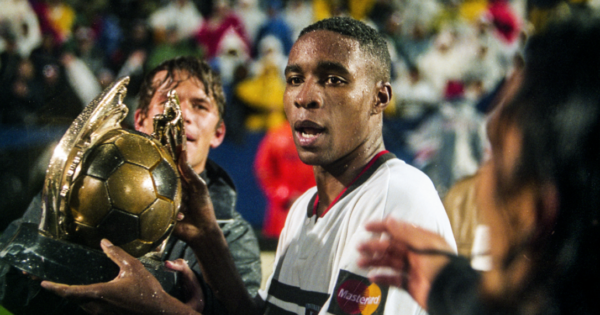How After 25 Years, MLS Transformed Into a Sports Powerhouse

When Major League Soccer debuted in 1996, the league had a definite look. There were bright uniforms that wouldn’t have felt out of place at a Jimmy Buffett concert. Most of the matches were played on NFL fields—sometimes with the yardage lines in full flower— and the style of play was bruising. An entertaining Instagram account chronicles that first year, including a rain-soaked final between the L.A. Galaxy and D.C. United, that remains a classic.
After hosting the 1994 World Cup (establishing a national league was a requirement) and starting with 10 teams, MLS experimented with some tweaks to the “beautiful game.” The most prominent being a shootout at the end of tied matches to not alienate American fans, who were not used to professional sports stalemates.
And the team names were far afield from what purists expected. There were the Tampa Bay Mutiny, San Jose Clash, Dallas Burn and the Kansas City Wiz. In some ways, the extra flourishes were reminiscent of the league’s predecessor, the NASL, which folded in 1984. But, like its forebearer, MLS certainly had (and retains) a strong personality and sense of self.
As MLS celebrates its 25th season—and an MLS Cup matchup between the defending champion Seattle Sounders and Columbus Crew (one of the original 10 franchises)—it is now a powerful league with 26 teams, with four more on the way. It’s also the third most-attended league in U.S. sports behind the NFL and Major League Baseball with robust broadcast rights and an increasingly diverse and young audience that craves soccer and can set it up for future success.
Adweek spoke to several people involved with the league’s formation. What emerged is a compelling and unique story about its business plan, the league’s upward arc, some of the eclectic characters and personalities that built a strong foundation that will chart the course for where MLS is headed next.
The original business plan
According to Sunil Gulati, former MLS deputy commissioner and past president of the U.S. Soccer Federation, several people involved with the sport thought about taking a run at developing a business plan in the late 80s, several years after the NASL folded.
“It never really got anywhere,” he said.
In late 1991, Alan Rothenberg, chairman and CEO of the 1994 World Cup, put together a group to point the way forward on starting a league. One of the mandates of hosting the global tournament was that it be held in America. Gulati knew it was critical to find someone to structure a business plan, since others were working on the World Cup.
“Mark Abbott became the point person,” said Gulati. “And later on, become employee number one of Major League Soccer.”
Abbott, who serves as the league’s president and deputy commissioner, was a young associate at law firm Latham & Watkins, where Rothenberg was a partner. Abbott overheard Rothenberg asking about having someone draft a business plan. That was the spark he needed.
“I heard that, ran down four flights of stairs to his office and volunteered to do it,” said Abbott, who grew up in St. Paul, Minn. and was a ballboy at Minnesota Kicks games in the ‘70s.
Learning from the NASL, where powerhouse teams like the New York Cosmos had an outsized influence, one of the more critical components of the plan was to ensure that MLS had a solid ownership structure. Additionally, those owners needed to be in it for the long haul.
https://www.adweek.com/performance-marketing/how-after-25-years-mls-transformed-into-a-sports-powerhouse/